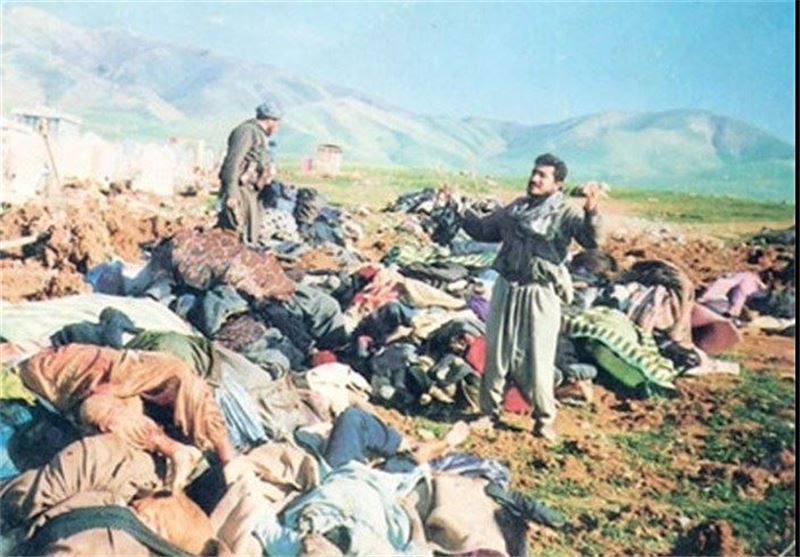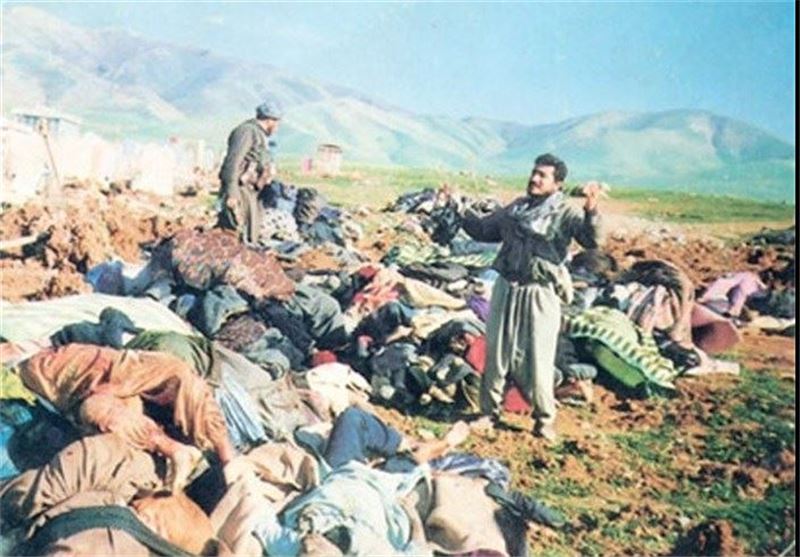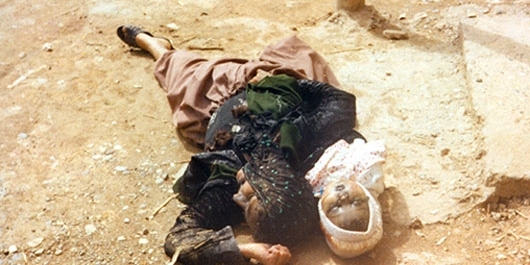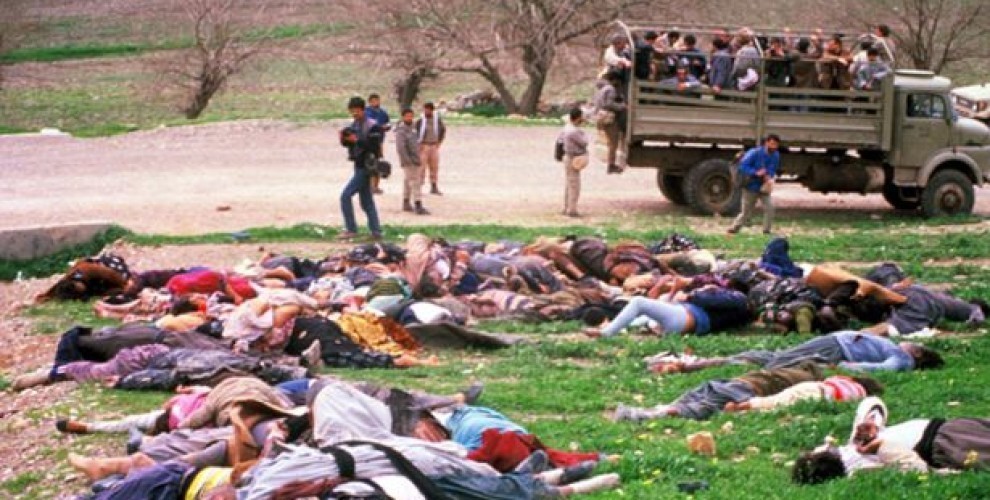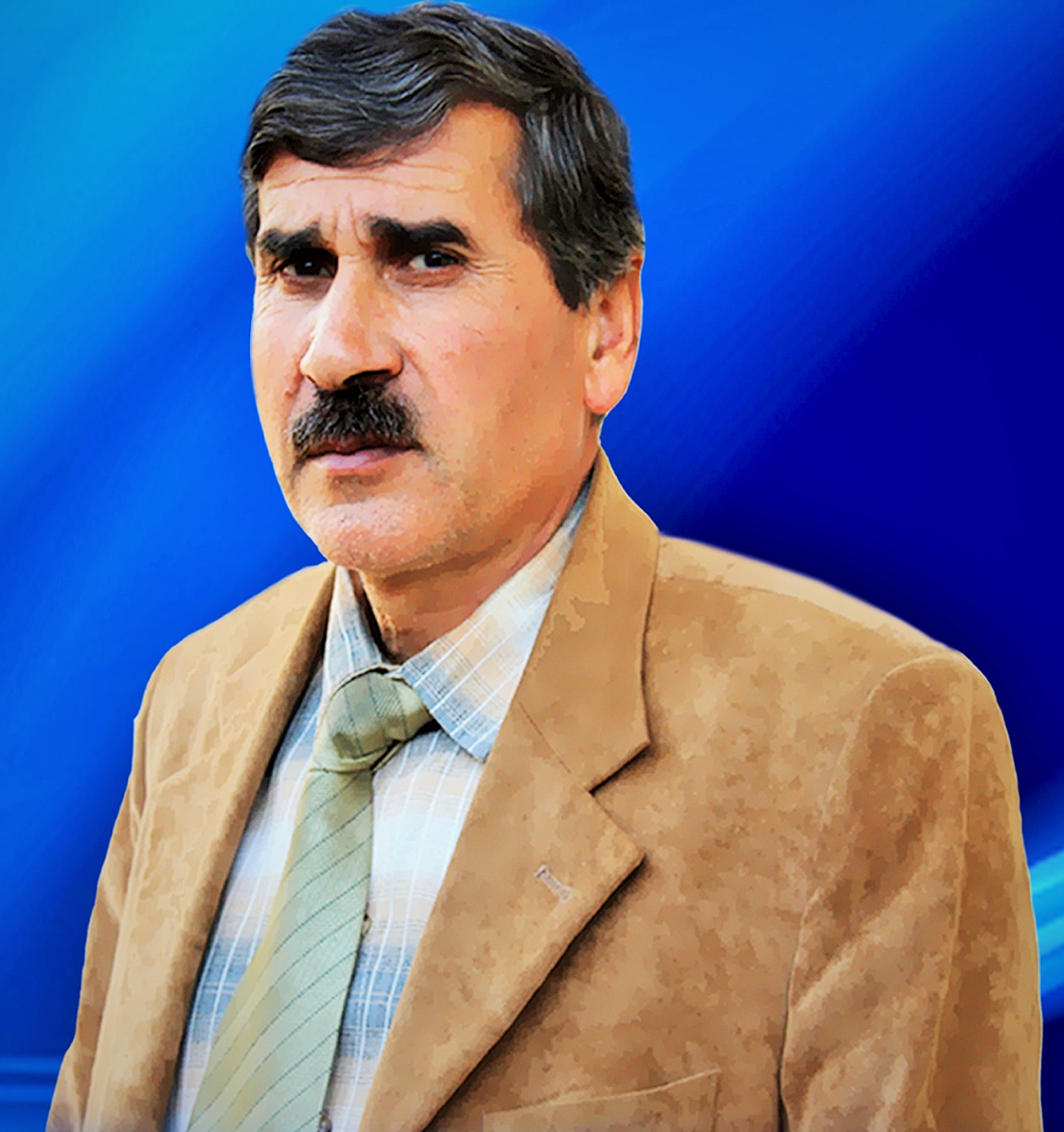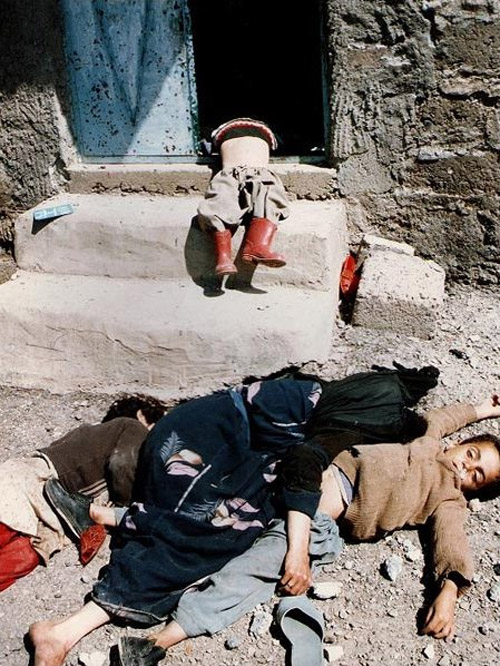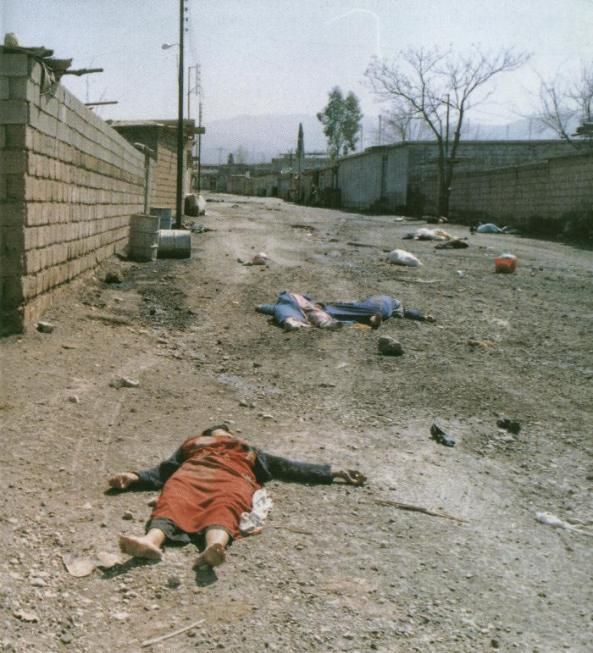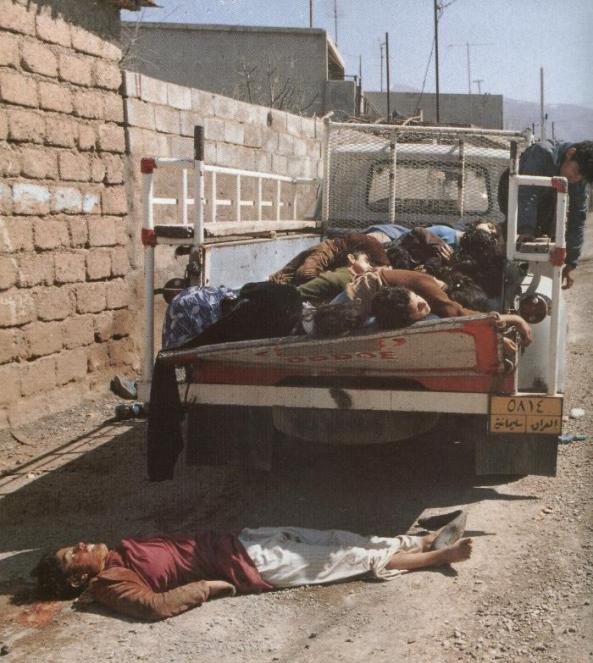Halabja...a massacre in memory, similar danger Kurds live today
Despite the passage of 34 years on the most heinous massacres against humanity, the dictatorial ideology of the neighboring and occupying regimes of Kurdistan continues in their efforts to exterminate the Kurds in various ways, and Turkey plays the spearhead of these forces.
The twentieth century almost ended without Kurdish geography witnessing another episode more severe than the series of bloody massacres that the Kurdish people were subjected to, from the mountains of Dersim, Agri, and Wadi Zilan to the plains of Mahabad, passing through the massacre at Amuda Cinema. The highest levels of Saddam Hussein's regime in the use of chemical weapons against the Kurds in Halabja.
The events
The outskirts of the city of Halabja in Southern Kurdistan witnessed the arrival of Iranian forces in the last phase of the eight-year war between Iraq and Iran, or what is known as the “first Gulf War.” The city of Halabja was bombarded by Iraqi forces on 14 and 15 March 1988.
Friday saw a strange calm until 11:30, when suddenly the sound of explosions and Iraqi warplanes flew over the city and nearby villages, as they bombed the city of 80,000 people with chemical weapons.
The attack lasted for about 5 hours, while the bodies of thousands of Kurdish citizens were scattered on the roads and in front of houses and agricultural lands.
Thousands of civilians lost their lives in the year following the bombing as a result of health complications, diseases and birth defects, and many families of the victims are still trying to find the remains of their children, old men and men who went missing during the bombing.
Saddam Hussein's regime had used Iranian forces near the city as a pretext to carry out the massacre, in the framework of the Anfal campaign that he started in 1986 and continued until 1989 by invading areas in Southern Kurdistan and committing genocide against the Kurds, where at least 180,000 citizens lost their lives in the operation.
Later, after conducting analyzes of samples collected from the city and the victims, experts confirmed the use of three types of poisonous gases in the bombing of the city, namely (cyanide, toxic mustard gas, and sarin gas, which affects nerves).
The chemical bombs that were used 34 years ago still affect nature and crops, causing problems and suffering to the population.
Southern Kurdistan was almost closed to the world at that time, and the Kurds were unable to share their stories of this tragedy with others, even though Human Rights Watch recorded the massacre in 1993, 5 years after the massacre.
'At any opportunity they have, they will commit massacres against the Kurds'
34 years after one of the most heinous crimes against humanity, the Kurds throughout Kurdistan are still in danger of extermination at the hands of the regional regimes occupying large parts of Kurdistan.
Azad Ibrahim, a writer and journalist who spoke to our agency, believes that the Halabja massacre is a form of genocide against the Kurds continues to this day in various forms, referring to the aggression of the Turkish occupation in southern Kurdistan and Rojava and that it does not differ from the practices of the regime. Saddam Hussein, noting that what the regimes of Iran, Turkey and Syria are doing against the Kurds are only miniature copies of the Halabja massacre.
Azad Ibrahim adds that Saddam Hussein's regime did not read the Kurdish reality, its politics, culture and social, but was a dictator who tried to end the Kurdish presence through massacres, explaining that the neighboring regimes of Kurdistan seek to fill the void of Saddam Hussein's regime and continue the massacres in various ways, and that every massacre and bloody reality of the Kurds is linked events before the regimes take turns to practice against the Kurds.
Regarding the current stage, Azad Ibrahim points out, "Despite the passage of 19 years since the fall of Saddam Hussein's regime, the region suffers from a dictatorial ideology. We are facing a vile reality. They claim democracy, but all of them are baseless slogans. At any opportunity they will commit massacres against the Kurds, whether in Turkey, Iraq, Syria or Iran.
Bradost Mitani:
For his part, Kurdish writer and historian Bradost Mitani sees in his interview with our agency, that as long as human thought, culture and the brotherhood of peoples are lacking in the regimes and governments in the Middle East, the Kurds are at risk of extermination.
Bradost regrets the reality of tyrannical regimes, noting, "Unfortunately, they do not consider the Kurds to have a deep and ancient culture and history. They do not consider the Kurds to be an existence. These regimes lack human feelings. They are trained in the culture of power and extermination. In many areas, the Kurdish people must protect all these things through military force, because it is the solution to stopping the wheel of massacres against the Kurds.
Mitani also talks about the Kurdish reality in the current stage and the lessons they learned from the Halabja massacre, saying, "The Kurds, who lived through these scourges, are still panting behind the false Islamic cover that Iran and other regimes claim in particular. We are facing the falsity and trap of these groups claiming Islam." Even when Halabja was subjected to a chemical attack, none of the imams and the so-called Muslim scholars opposed this catastrophe, but rather supported Saddam Hussein in his attack.
Bradost adds, "The most important lesson that can also be learned is that diplomatic relations must be well read, to what extent they fall in the service of the people, Halabja was the victim of a misunderstanding of the relations held with the neighbourhood, but today to what extent do we read that, which countries have provided the Iraqi regime with chemical weapons, how is our relationship with these countries today, I would like to talk here about the relationship of the Kurds with the Soviet Union, the Kurds were looking forward to socialism in the Soviet Union."
'The current division still threatens the Kurdish existence'
Some political analysts and Kurdish parties believe that the partisan division and acting in accordance with partisan interests opened the way for Saddam Hussein's regime to commit the massacre, and for the city to become a victim of the division at the time, just as the Kurdish parties took advantage of this massacre for their interests.
The opinion of the writer Azad Ibrahim differs, as he considers that the massacre is much greater than the activity of political parties in southern Kurdistan at the time, and that the situation in Kurdistan was intertwined between the regional states in the region.
For his part, Bradost Mitani indicates that the partisan division had a significant impact on the Kurds being subjected to the massacre, noting that the current division still threatens the Kurdish presence, especially in the political circles in southern Kurdistan, despite the presence of a parliament that does not represent the lived reality, and that the problems which floats on the surface there, expresses the depth of the Kurdish problem in general.
Trial of the perpetrators of the massacre
The former Iraqi Defense Minister Ali Hassan al-Majid, who was nicknamed after the attack as "Chemical Ali", was one of the most prominent faces of Saddam Hussein's regime, and the mastermind of the chemical attack against Halabja and the Anfal campaign.
After the execution of Saddam Hussein in 2006, the Supreme Criminal Court of Iraq had ruled and executed the death sentence in 2010 against Ali Hassan al-Majid, who was convicted of murder and genocide along with Sultan Hashem Ahmed and Hussein Rashid Muhammad for committing genocide, and the rope with which they were hanged was handed over to the municipality of Halabja.
The High International Criminal Court in the Hague, Netherlands, also tried businessman Frans Van, who bought chemicals on the global market and sold them to the Iraqi Baath regime, to 15 years in prison, according to Dutch news agencies.
At the time when the city fell into a long hibernation, the world, especially the Kurdish people all over the world, stands every year at 11:30 on March 16, a minute of silence in memory of the victims of the Halabja massacre.
recognition of the genocide
The Halabja massacre did not leave room for the world to distort the laws and its provisions, because this massacre agreed with the standards of the Genocide Convention of 1948 in defining genocides.
The Dutch court deemed the Halabja massacre to fulfill the requirement set out in the Genocide Conventions as an ethnic group legally.
On December 5, 2012, the Swedish Parliament recognized the Halabja massacre as a genocide against the Kurds, and other courts recognized the Halabja genocide.
After Halabja... 3 decades and the massacres did not stop
1993 witnessed the displacement of the Kurds by the Turkish occupation from 4,000 villages in Northern Kurdistan towards Iraq forcibly and without any legal argument, burning villages and agricultural crops and arresting hundreds and imprisoning them.
2004 also witnessed the first Kurdish uprising in Syria from the cities of Rojava, specifically the city of Qamishlo, to the capital, Damascus, after a football match, which turned into acts of repression against the Kurdish people and led to a massacre against Kurdish youth, where 40 young people were martyred, dozens were injured, and thousands were arrested in dozens of cities. .
The decade from 2010 to 2020 was not without massacres and crimes that the Kurds witnessed in Kurdistan, at the hands of Turkey and mercenary groups, led by ISIS.
As a result of the brutality of Jabhat al-Nusra, the Kurdish blood spilled in the towns of Tel Hasel and Tel Aran, near the city of Kobani, which witnessed the most violent battles during the decade of the war in Syria, and the martyrdom of hundreds of Kurds to liberate the city from ISIS.
The scene of destruction and bloodshed in the Kurdish cities of Afrin, Serê Kaniyê, and Girê Spî did not differ during the Turkish aggression, which followed the scorched-earth policy and committed genocide against the Kurds in front of the international community.
While one of the worst tragedies of the Kurdish people cannot be forgotten when ISIS attacked the Shingal area in August 2014, it committed atrocities and crimes that claimed the lives of nearly 5,000 Kurds, and enslaved women to the cities of Raqqa, Deir ez-Zor and Mosul.
While the Turkish occupation army destroyed 13 Kurdish cities in 2016 in northern Kurdistan, including the cities of Nusaybin and the island of Botan and Amed, in the most violent attack in northern Kurdistan since the Dersim uprising of 1937, and hundreds of young Kurdish men and women lost their lives amid a media blackout.
The massacres of Robosky, Perseus and Ankara, which all killed nearly 200 people, showed the brutality of the regimes launching attacks on the Kurds in the current century.
International forums did not pay attention to the humanitarian disasters that resulted from the Turkish invasion of northern and eastern Syria, and before that, the attacks of terrorist mercenaries and massacres in Kurdistan in general, but rather went beyond that to the bartering that Turkey committed war crimes in Syria, in the context of what serves international relations and the interests of the major powers, This is far from the reality on the ground, as these massacres represent the reality of the Kurds who have lived for more than a hundred years.
A
ANHA

